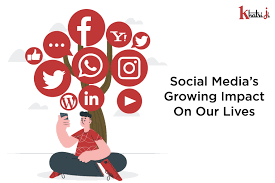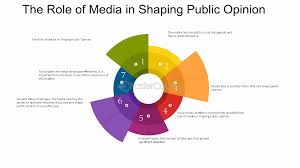Media’s Role in US Elections
The media has always played a key role in shaping elections in the United States. In every election cycle, media outlets provide information about candidates, their policies, and campaign updates. Media influence voters by shaping opinions, giving visibility to certain candidates, and bringing important issues to light. In this log, we will explore the impact of different types of media on US elections, the evolution of media in politics, the advantages and challenges posed by media coverage, and the potential bias in reporting.
The Evolution of Media in US Elections
The way media shapes US elections has changed a lot over time. In the past, newspapers and radio were the main sources of information for voters. Newspapers printed interviews, speeches, and debates, which helped voters understand the candidates’ views. Radio, later on, allowed people to hear candidates’ voices, making them feel more connected.
Television made the biggest change when it entered the scene in the mid-20th century. Televised debates, especially the famous 1960 debate between John F. Kennedy and Richard Nixon, showed how important a candidate’s appearance and speaking skills were on TV. Kennedy’s calm and confident appearance helped him gain an edge over Nixon, who appeared nervous and tired.
Today, the internet and social media platforms like Facebook, Twitter, and Instagram have revolutionized political campaigns. Candidates can now connect directly with voters through social media, while voters can instantly share their opinions. The internet has also made news more accessible, allowing people to stay informed 24/7.
Traditional Media’s Influence on US Elections
Traditional media includes newspapers, radio, and television. These outlets have been the primary sources of information about elections for decades. News programs, political talk shows, and televised debates help voters understand candidates’ platforms. These media outlets often conduct interviews with candidates, discuss campaign strategies, and provide analysis on important issues.
Television news networks like CNN, Fox News, and MSNBC dedicate significant time to election coverage. They invite political experts to analyze the latest polls, discuss strategies, and explain the significance of campaign events. Newspapers, too, provide in-depth articles about political issues, offering both facts and opinions.
However, traditional media can also influence elections in subtle ways. For example, candidates who receive more media coverage tend to be seen as more important, which can increase their popularity. The way media outlets cover candidates also affects public opinion. Positive coverage can boost a candidate’s image, while negative coverage can hurt their chances.
Social Media and Its Growing Impact

In recent years, social media has become one of the most powerful tools in elections. Platforms like Twitter, Facebook, and Instagram allow candidates to communicate directly with voters. Social media enables candidates to share their thoughts in real time, post campaign updates, and even respond to criticisms instantly.
For voters, social media offers a space to engage in political conversations. People can share articles, post comments, and participate in discussions about the election. Social media also allows voters to see how others are reacting to candidates and events. This can create a sense of community among supporters or opposition groups.
Social media has the advantage of reaching younger audiences who may not consume traditional news. Younger voters are more likely to follow candidates on social media, watch campaign videos, and read posts directly from the candidates’ accounts. However, the rapid spread of information on social media can also lead to misinformation and fake news, which can confuse voters and distort the facts.
Media Bias and Its Effect on Voter Perception
One of the challenges of media in elections is the potential for bias. Media bias happens when news outlets show favoritism toward certain candidates or political parties. This can happen in various ways, such as giving more airtime to one candidate, using positive or negative language, or focusing on certain issues over others.
News networks are often accused of having political biases. For example, Fox News is known for leaning toward conservative views, while CNN and MSNBC are considered more liberal. This bias can shape how voters perceive candidates. A voter who watches a conservative news network may receive a different version of the news than someone who watches a liberal channel.
The way media frames certain issues can also influence elections. By focusing on certain topics, like the economy or immigration, the media can make these issues seem more important to voters. This framing can benefit candidates who have strong views on those topics.
The Role of Debates and Interviews
Debates and interviews are essential parts of media coverage in US elections. Presidential debates give voters a chance to see candidates discuss their policies and answer tough questions. These debates are televised nationally, giving millions of viewers a chance to evaluate how candidates perform under pressure.
Interviews are another important aspect of election coverage. Candidates appear on news programs to answer questions about their policies, respond to current events, and clarify their positions on various issues. Interviews help voters get to know the candidates better and understand their plans if elected.
Both debates and interviews can shape voter opinions. A strong performance in a debate can boost a candidate’s popularity, while a poor performance can hurt their image. Candidates also use interviews as opportunities to connect with voters on a personal level, making them seem more relatable and trustworthy.
Challenges of Media in US Elections
While the media provides valuable information to voters, there are also challenges in how elections are covered. One major issue is the 24-hour news cycle, which can lead to sensationalism. News outlets are constantly looking for new stories to cover, and this can result in focusing on scandalous or dramatic events rather than important policy discussions.
Misinformation and fake news are also significant challenges, especially with the rise of social media. False information can spread quickly, leading voters to make decisions based on incorrect facts. Candidates often have to combat misinformation, which can be time-consuming and distracting.
Another challenge is the influence of money on media coverage. Candidates with more funding can afford to buy more advertising time, which can give them an advantage over candidates with less financial support. The media may also focus more on well-funded candidates, giving them more visibility.
Conclusion: Media as a Double-Edged Sword
Media plays a crucial role in shaping US elections by providing information, framing important issues, and giving voters access to candidates. However, media can also shape elections in ways that are not always fair or balanced. Bias, sensationalism, and misinformation can distort the election process, influencing how voters perceive candidates and make decisions.
Despite these challenges, media remains one of the most important tools in modern elections. It helps voters stay informed and engaged, while also holding candidates accountable for their actions and policies. In the future, it will be important to continue monitoring how media shapes elections to ensure a fair and democratic process for all.










